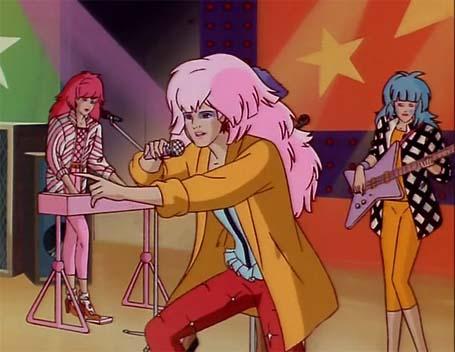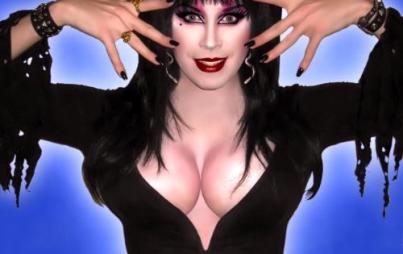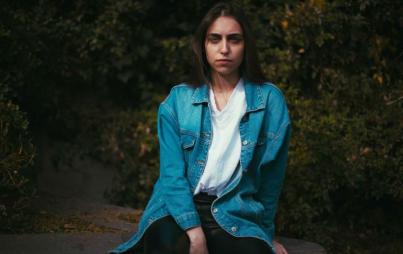
If you came of age in the '80s, you probably remember Jem and the Holograms, a cartoon about an extravagantly-coifed music company owner whose alter ego was a singer in the Holograms all girls' band—a much cooler, animated precursor to Hannah Montana, if you will. A hyped-up big-screen adaptation of the show has been in the works since last year, and today, we got our first glimpse of the live-action adaptation . . . in the form of this utterly un-thrilling blurry image:

Still, the image has excited the masses enough to turn the movie into a trending topic. But before succumbing to collective nostalgia and getting too fist-pumpy about it all, let's remember for a moment that the film has a pretty glaring problem.
And yes. It has to do with gender.
One of the cool things about the original show was that, in addition to featuring strong female characters, it was created and written by a woman, Christy Marx. Yet Marx has been completely shut out of the decision-making process for the movie—a move that prompted a cadre of tweeters to launch a #WeWantChristy campaign when the film was initially announced. The silver screen version of this female-empowerment tale is being spearheaded by a male director, male screenwriter, and eight male producers.
Not a single female—not one!—has a prominent role in producing this film.
Which wouldn't be so maddening if it weren't so utterly familiar.
Indeed, I did some research and discovered that three of the most high-profile blockbuster film adaptations with strong female roles in the last decade— Divergent, Hunger Games, and Harry Potter—were predominantly produced, written, and directed by men, despite being originally created by women.
Using the Internet Movie Database as source, here's what I discovered:
Divergent and Insurgent
Source material by Veronica Roth
Representation of women on film production team: 15%*
Hunger Games, Hunger Games: Catching Fire, and Hunger Games: Mockingjay: Part 1
Source material by Suzanne Collins
Representation of women on film production team: 27%**
Harry Potter series
Source material by J.K. Rowling
Representation of women on film production team: 14%***
You know something's amiss when 27% is starting to look like something to celebrate.
And yes, I do realize that the most talented people should be put in charge of major films, regardless of gender, and that this is really the fault of an industry that fails to promote female talent to begin with. But we fell in love with Hermione, Katniss, Tris, and Jem in part because they felt like complex, authentic females who were brought to life by complex, authentic women. And one wonders how much is lost in translation when a narrative about women is interpreted and produced by men.
Consider also that, last year, just 30% of all speaking roles in Hollywood films belonged to women. What does it say than on the rare occasions when a female protagonist is given voice in a high-profile film . . . that voice is managed by men?
Until Hollywood can get its act together, and learn how to (wonder of wonders!) create a female-helmed film out of female-driven material, I'll be jumping off the Jem bandwagon. #WeWantChristy—and for that matter, more Christys all across the Hollywood landscape.
*Men involved in the film production: 2 directors, 4 writers, 7 producers
Women involved in the film production: 1 producer, 1 writer
**Men involved in the film production: 2 directors, 6 screenwriters, 6 producers, 2 executive producers
Women involved in the film production: 3 producers, 3 executive producers
***Men involved in the film production: 4 directors, 2 writers, 8 producers , 7 executive producers
Women involved in the film production: 3 producers






